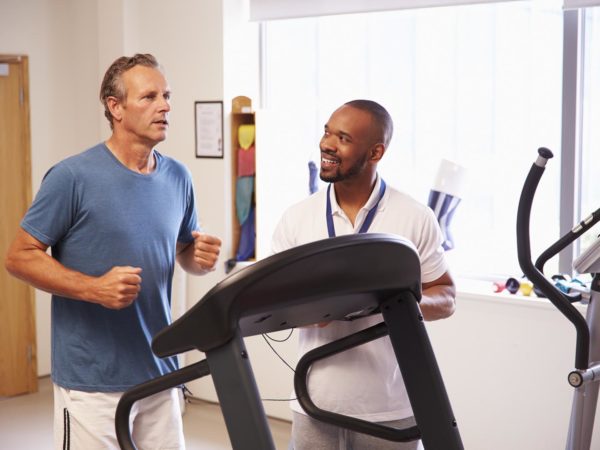Do You Know Your Fitness Age?
Can you please explain what “fitness age” means and how you calculate it? I’ve been told that it is the best gauge of present health and a good predictor of long-term health.
Andrew Weil, M.D. | January 27, 2014

“Fitness age” is a relatively new term coined by researchers in Norway who have devised a way of calculating it by creating an algorithm with five different bits of information. They defined fitness age, which can be lower or higher than your chronological age, as how well your body works physically, relative to how well it should work for someone your age. To create the formula, researchers at the Norwegian University of Science and Technology in Trondheim evaluated nearly 5,000 Norwegians ages 20 to 90 by measuring their height, body mass index (BMI), resting heart rate, HDL (“good”) cholesterol and total cholesterol and how long each of these individuals could run on a treadmill until they reached the point of exhaustion. The treadmill test reveals how well the body delivers oxygen to its cells, a measurement expressed as VO2 max. This number has been found to correlate closely with longer life spans, even among seniors and overweight individuals, and your VO2 max is the best indicator of your fitness age.
In an interview with the New York Times, Ulrik Wisloff, director of the K. G. Jebsen Center of Exercise in Medicine at the Norwegian University, explained that “a 70-year-old man or woman who has the peak oxygen uptake of a 20-year-old has a fitness age of 20.”
Dr. Wisloff’s team evaluated nearly 5,000 individuals and used data from their study subjects to determine the desirable VO2 max for healthy individuals at every age from 20 to 90. Then they created an online calculator that enables individuals to find their VO2 max without running to exhaustion on a treadmill. To use it, you need to assemble the following information in addition to your age and sex: your waist measurement, the frequency and intensity of your exercise and your resting heart rate (the normal range for adults is 60 to 100 beats per minute). To calculate your resting heart rate sit still for 10 minutes and then find your pulse. Count the number of beats in 15 seconds and then multiply that number by four. The online calculator is at http://www.ntnu.edu/cerg/vo2max.
If you don’t like the result, you can change it – all it takes is more exercise. Work out longer or with more intensity or both and then recalculate. According to Dr. Wisloff,a youthful fitness age “is the single best predictor of current and future health.”
Andrew Weil, M.D.
Source
Ulrik Wisløff et al, “Estimating VO2peak from a Non-Exercise Prediction Model; the HUNT Study, Norway”. Medicine & Science in Sports & Exercise, 2011; DOI: 10.1249/MSS.0b013e31821d3f6f










